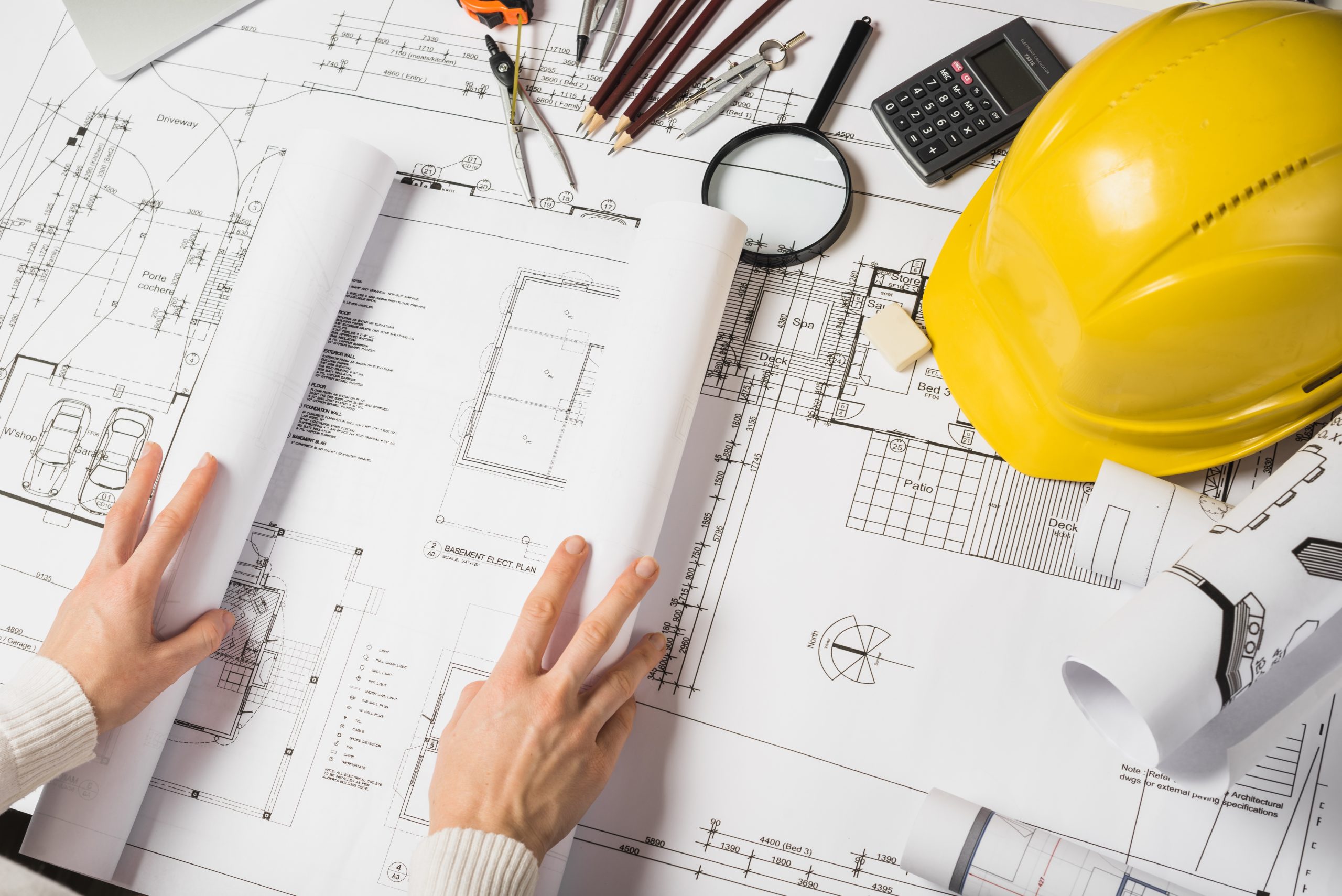Architect Recommended Tools for 3D Modeling
Comprehending the Diverse Occupation Paths Available for Aspiring Architect
As a hopeful Architect, you have a globe of occupation courses waiting for you. Whether you're attracted to standard architecture or the subtleties of sustainable layout, there's a specific niche that straightens with your interests.
Standard Style: Designing Structures and buildings
Traditional design concentrates on creating buildings and structures that blend capability with aesthetic appeal. Your styles can show social heritage, showcasing local traditions while meeting modern-day demands.
You'll develop abilities in preparing, model-making, and site evaluation, permitting you to envision and interact your concepts efficiently. Engaging with clients, you'll require to understand their vision and translate it right into feasible layouts.
Furthermore, developing codes and sustainability practices are essential in your job, ensuring your frameworks are eco pleasant and safe. As you expand in your occupation, you'll discover possibilities in domestic, industrial, or perhaps remediation jobs, each offering distinct obstacles. Embracing typical architecture paves the method for a fulfilling job that pays homage to the past while shaping the future.
Urban Preparation: Shaping Neighborhoods and Public Spaces
As an ambitious Architect, you can play a vital duty as an urban organizer, transforming just how neighborhoods communicate and work. By using neighborhood involvement approaches, you'll assure that homeowners have a voice in forming their atmosphere. And also, integrating sustainable style principles will assist create rooms that not only meet today's demands but additionally shield the future.
Duty of Urban Planners
While numerous may think about engineers as the single enthusiasts behind buildings, urban organizers play a crucial duty fit the more comprehensive landscape of neighborhoods and public areas. They examine land use, zoning laws, and area requires to develop lasting atmospheres that enhance lifestyle. By collaborating with numerous stakeholders, you'll assist create parks, transport systems, and domestic locations that advertise social communication and availability. Urban organizers additionally focus on ecological considerations, guaranteeing that growths integrate green rooms and support biodiversity. Your experience in spatial layout and area characteristics allows you to envision future development while protecting cultural heritage. In this crucial function, you'll directly affect how individuals experience their environments, making every task an opportunity for favorable adjustment.
Neighborhood Interaction Approaches
Efficient community involvement strategies are important for metropolitan organizers to assure that the voices of locals are listened to and valued in the preparation process. To cultivate purposeful dialogue, you must focus on open online forums and workshops where neighborhood members can share their concepts and concerns. By actively integrating and paying attention comments, you'll develop rooms that reflect the neighborhood's requirements, eventually leading to even more lasting and effective metropolitan environments.
Sustainable Design Concepts
When creating city spaces, including lasting design concepts is crucial for producing environments that grow both environmentally and socially. You must begin by focusing on power effectiveness, using materials that lower waste and promote recycling. Take into consideration integrating environment-friendly rooms, like parks and yards, to enhance biodiversity and improve air quality. Advertising walkability and public transportation can reduce dependence on cars and trucks, fostering a healthier neighborhood.
Creating with water preservation in mind is additionally vital-- consider rain yards and absorptive surfaces to manage stormwater. Entailing neighborhood participants throughout the preparation procedure assurances that the spaces you produce satisfy their requirements and motivate social interaction. By accepting these concepts, you'll add to vibrant, sustainable urban landscapes that profit everybody.

Landscape Style: Developing Sustainable Outdoor Environments
As you check out landscape style, you'll uncover crucial style concepts that create lovely and useful outside rooms. Sustainable techniques play a crucial duty in making sure these settings prosper while decreasing environmental effect. Plus, you'll discover a selection of occupation opportunities that permit you to make an actual distinction in how people connect with nature.
Design Principles in Landscape
Comprehending design concepts in landscape design is crucial for creating lasting outside environments that balance with nature. You'll require to consider aspects like balance, proportion, and scale to ensure your styles feel cohesive and welcoming. Incorporating indigenous plants not just boosts biodiversity however likewise minimizes water usage, making your landscape durable. Think of the flow of space and how people interact with it; paths and seating areas ought to invite expedition and leisure. In addition, focus on seasonal modifications, developing with products that match the surroundings year-round (Architect). By prioritizing sustainability and looks, you can produce outdoor rooms that improve the neighborhood and advertise wellness. Accepting these principles will certainly establish a strong foundation for your job in landscape style.
Sustainable Practices Summary
Lasting methods in landscape style not just concentrate on aesthetic appeals however also prioritize eco-friendly health and wellness and source preservation. You can make spaces that advertise dirt health, such as practicing and making use of natural products permaculture principles. Ultimately, these practices assure your styles benefit both individuals and the atmosphere for years to come.
Occupation Opportunities Exploration
With a strong foundation in lasting practices, landscape style uses a range of occupation paths that allow you to make a significant impact on the setting. You could function as a landscape developer, creating aesthetically pleasing and useful outside areas, or focus on environmental restoration, assisting to revitalize damaged ecological communities. Urban coordinators frequently work together navigate to these guys with landscape engineers to create environment-friendly areas in city settings, boosting city livability. If you're passionate concerning education, think about ending up being a landscape style teacher, motivating future generations. Furthermore, you might collaborate with nonprofits focused on environmental sustainability or take part in study to innovate new techniques. Each path not just forms lovely atmospheres but additionally fosters a healthier earth for future generations.
Sustainable Design: Concentrating On Eco-Friendly Practices
As you discover your profession in design, welcoming eco-friendly methods can establish you apart in an affordable area. Lasting design concentrates on creating buildings that minimize ecological influence while improving owner health. By including eco-friendly products, energy-efficient systems, and lasting building techniques, you'll contribute to a greener future.
Begin by obtaining understanding of environment-friendly qualifications like LEED or BREEAM, which can boost your qualifications. Take into consideration how all-natural light, ventilation, and thermal efficiency can optimize layout. Collaborate with designers and ecological consultants to introduce solutions that decrease waste and save sources.
Don't fail to remember the relevance of area participation-- appealing regional stakeholders can motivate styles that harmonize with the setting. As clients significantly prioritize sustainability, your know-how in environmentally friendly techniques will certainly not only attract jobs yet additionally meet your passion for accountable architecture. Embrace this vital element of the career, and enjoy your job thrive.
Historic Preservation: Securing and Recovering Cultural Heritage
While you begin on your architectural trip, take into consideration the necessary function of historical conservation in keeping our social heritage. This area concentrates on the security and restoration of significant structures, websites, and structures that inform the tales of our past. By engaging in historical conservation, you'll help secure the architectural legacy that forms neighborhood identification.
As a historical preservation Architect, you'll analyze historic relevance and examine the condition of structures. You'll work closely with preservationists and chroniclers to guarantee authentic reconstruction strategies are employed. This profession path enables you to blend creative thinking with study, allowing you to develop solutions that appreciate original products and craftsmanship.
Your job go right here not only adds to sustainability by recycling existing buildings however likewise cultivates a feeling of pride within communities. Embracing this path will help you end up being a guardian of background, preserving the tales and visual appeals that improve our lives.
Inside Style: Enhancing Indoor Spaces
Historical preservation and interior design both share a commitment to boosting the built setting, however they focus on different facets. While historic preservation highlights preserving a framework's cultural and historic value, indoor architecture absolutely nos in on optimizing interior areas for capability and appearances.
As a hopeful Architect, you'll locate that interior design enables you to mix creative thinking with technical skills. You'll make areas that not only look good however likewise promote comfort and efficiency. This field includes recognizing exactly how light, shade, and materials connect within an area, influencing state of mind and usability.
You'll service numerous tasks, from household homes to industrial workplaces, ensuring that each setting satisfies the requirements of its residents. By prioritizing customer experience, you can change interiors into practical and motivating spaces, making a considerable effect on just how individuals communicate with their environments. Welcome the chance to boost interior settings and shape the method people live and work.
Industrial Style: Merging Performance With Appearances
Commercial style plays a necessary role in creating products that seamlessly mix visual appeals with functionality, guaranteeing that what you make use of daily is not just visually appealing yet additionally useful. As an aspiring Architect, you could involve yourself in this field, focusing on designing whatever from furnishings to customer electronic devices. Your work includes recognizing user demands, materials, and manufacturing procedures, allowing you to develop ingenious services that boost daily experiences.
In industrial style, you'll usually team up with manufacturers, marketers, and engineers, guaranteeing that your layouts are not just gorgeous but likewise practical. This career course uses a vibrant environment where creativity fulfills functionality, making it a fulfilling option for architects interested in shaping the items of tomorrow.
Regularly Asked Inquiries
What Educational Accreditations Do I Need to End Up Being an Engineer?
To become an architect, you'll require a professional level in architecture, generally a Bachelor's or Master's. Additionally, you'll need to finish an internship and pass the Architect Enrollment Assessment to exercise legitimately.
Are There Certification Requirements for Different Building Occupation Paths?
Yes, there're qualification requirements for different architectural paths. Architect. You'll require to pass examinations, complete internships, and often seek specialized training, depending upon your selected emphasis, like landscape style, city layout, or historic preservation
What Software Application Skills Are Necessary for Designers Today?

How Can I Gain Practical Experience While Researching Architecture?
You can acquire practical experience by interning at building firms, joining design competitions, volunteering for neighborhood jobs, or teaming up with schoolmates on real-world projects. These possibilities boost your skills and develop important connections in the market.
What Work Opportunities Exist Outside Standard Design Firms?
You can explore various task possibilities outside conventional architecture firms, like city preparation, interior decoration, landscape architecture, building monitoring, realty development, or even duties in sustainability consulting. Each deals one-of-a-kind difficulties and rewards.
Whether you're drawn to conventional architecture or the nuances of lasting style, there's a specific niche that lines up with your passions.When developing urban rooms, incorporating lasting style principles is crucial for developing atmospheres that grow both environmentally and socially.As you discover landscape design, you'll find necessary design concepts that produce useful and stunning outside rooms.Recognizing layout concepts in landscape design is essential for producing lasting outside settings that harmonize with nature.In commercial design, you'll typically work together with marketers, suppliers, and engineers, making certain that your internet styles are not only lovely yet additionally possible.